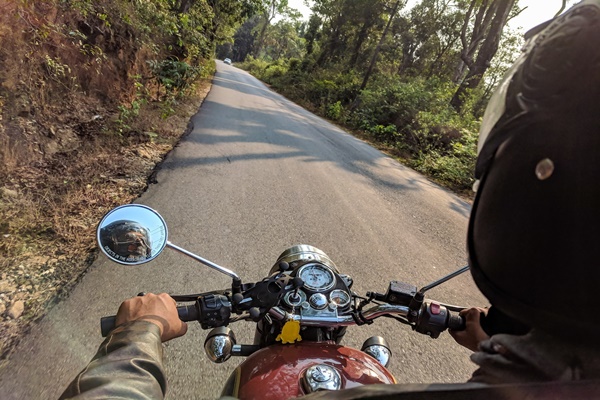With the wind gusting around you and a clear road ahead, all you can think about is the adrenaline rushing through you! But the kick isn’t all there is to motorcycling. It comes with its own risks and rules that must be adhered to in order to ensure that your joyride doesn't turn sour.
Below are some safety tips that all motorcyclists should know this year.
→ 1. Wear the Proper Motorcycle Gear
Riding on the open road exposes motorcyclists to the elements and other conditions that might lead to an accident. Wearing the proper motorcycle gear might be beneficial. Helmets are the most basic form of protection against serious head injury, and eye protection is another important piece of equipment to guard against debris kicked up by other cars. Get a reflective motorcycle backpack to store all your belongings and to increase your visibility on the road.
There are also leather riding boots. They are stylish, and they may also be functional. If you lose control of your bike and crash onto the road, heavy outerwear is meant to protect against road rash and may reduce the degree of muscle or bone damage.
→ 2. Attend Safety Training
A motorcycle safety course will educate you on the laws of the road, and you will also learn the proper steps to take in unforeseen riding circumstances. Driving a motorcycle takes expertise and sound judgment, which a safety course may help you develop.
Even if you already have a motorcycle license, attending a motorcycle safety course is a good idea to acquire new skills or refine current ones. Programs often combine on-bike instruction sessions with online courses to provide a practical and theoretical approach to honing or refreshing safe riding practices.
→ 3. Maintain Your Level of Comfort
Know your limits and ensure that your route and motorcycle are easy enough for you. If your bike feels too heavy for you, then it probably is. Pick a bike that fits your body and strength rather than the one that looks the best.
If you're cycling in a group, don't push yourself only to keep up with the others. Don’t speed or try to do tricks that you have never tried before just to impress bystanders or a special someone.
→ 4. Examine Your Motorcycle
You'll want to know it's in great working order when riding your bike down the highway. Even if the journey is a simple ride across town at modest speeds, a mechanical failure while riding might result in a severe collision; thoroughly examine your bike before each ride to help reduce the likelihood of an equipment or system problem.
Your pre-ride assessment should establish that your headlights, turn signals, and brake lights are all operational. For example, checking your tires for wear, cuts, and bulges can help you avoid a potentially dangerous rupture on the road. Maintaining adequate fluid levels can assist in preserving a motorcycle’s mechanical integrity and prevent a sudden engine failure.
→ 5. Take Caution
You cannot presume that other drivers will see you. Here are some ideas for staying visible: Avoid other drivers' blind areas; drive with your headlights on even during the day; wear reflective or bright clothes, and utilize your turn and hand signals at all times. Keep an eye out for road dangers. Defensive driving allows you to anticipate traffic difficulties and road hazards.
Sand, grease, and gravel can all cause traction problems. Bumps and potholes are also hazardous and should be avoided. Cross the train tracks at the proper angle. You should keep at least four seconds between yourself and the car in front of you, and this will let you come to a complete stop in an emergency.
Conclusion
No doubt, motorcyclists are frequently disregarded or seen as second-class road users. Ride with civility, caution, and understanding. Take heed of the tips given above so that you can ride safely.












0 Comments